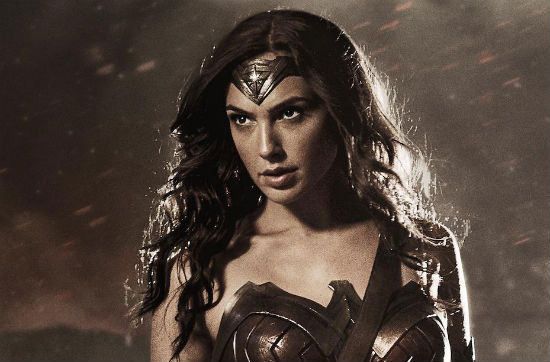
We live in an era marked by popular films that normalize violence against women, such as “Fifty Shades of Grey” and “Twilight.” In these films, men use sexual coercion and other abuse strategies (e.g., name-calling, humiliation, and stalking) to control and harm women.
Is this a problem? Sure it is, when you consider that popular culture sets an important underlying context for attitudes and behaviors. And when national research shows that violence affects at least one in four women across their lifetime.
So, based on history, even though the 2017 blockbuster “Wonder Woman” moves from Hollywood fictional romance into superhero genre, I worried it might adhere to the status quo: where Diana Prince’s (aka, Wonder Woman’s) agency and self-determination are hampered by men who abuse and control her — in particular, Steve Trevor, Wonder Woman’s crime-stopping partner and romantic interest.
Instead, magic bullet-proof bracelets aside, Wonder Woman breaks from the status quo: it does not normalize violence against women.
How can I be sure?
Because “Wonder Woman” passes the Abuse Litmus Test.
The Abuse Litmus Test is a tool to assist moviegoers in detecting power, control, abuse and harm in romantic/intimate relationships depicted in film. It includes three simple questions about romantic/intimate relationships based on prior feminist conceptualizations about relationship power and control:
1) Do partners in the relationship share equal power? Relationships marked by equal power include respectful sexual interactions between partners, shared communication and decision-making, honesty and accountability, trust and support.
2) Is power used by one partner to control the other? Relationships marked by an imbalance of power may include a partner using behaviors such as sexual violence, name-calling, humiliation, jealousy, privilege, and coercion and threats to control the other partner.
3) Is harm suffered by one partner? In relationships where there is an imbalance of power, the victimized partner tends to experience fear and dread, behavior change to reduce their risk of abuse, lost identity and sense of self, and disempowerment and entrapment.
For a romantic/intimate relationship in popular film to “pass” the Abuse Litmus Test (to be free of abuse, power imbalance and harm), as a moviegoer, I would need to answer “YES” to question 1 (partners share equal power) and “NO” to questions 2 and 3.
So, how does “Wonder Woman” do?
Based on this moviegoer (aka me), “Wonder Woman” passes the Abuse Litmus Test with feminist fervor.
Going through the three questions in the Abuse Litmus Test as applied to the relationship between Diana Prince (aka Wonder Woman, played by Gal Gadot) and Steve Trevor (Chris Pine)...
Note: spoilers ahead.
1) Do partners in the relationship share equal power? YES. The relationship between Diana Prince and Steve Trevor is characterized by equal power. Diana and Steve have egalitarian and respectful sexual/physical interactions (e.g., they share a non-coerced kiss; they respectfully negotiate sleeping next to each other on the boat when leaving Themyscira; they respectfully negotiate dancing with each other). They share (non-coerced) communication and decision-making (e.g., even when Steve tries to discourage Diana, aka Wonder Woman, from going into battle, he does not threaten or ultimately obstruct her). The characters also display with each other honesty and accountability (aided in some scenes by the “lasso of truth,” Wonder Woman’s weapon that compels Steve to tell the truth about where he is from and what his role in the war is), and trust and support (they support and care for each other throughout their expedition to stop the war).
2) Is power used by one partner to control the other? NO. Power is not used by either Diana or Steve to control each other. There are no sustained and harmful power imbalances in the relationship. There is no jealousy, no sexual violence (or coerced sexual interactions), name-calling, humiliation, jealousy, misuse of privilege, or coercion and threats used in the relationship. Even when Diana uses her lasso of truth (to encourage Steve to tell the truth about his identity and role in the war), she does so gently and to achieve a greater good—to identify the root of the violence and destruction brought to Themyscira. Steve does not engage in behavior typical of abusers like Christian Grey (Jamie Dornan) in “Fifty Shades of Grey”; for example, Steve does not display jealousy over Diana talking to other men or command Diana to behave (e.g., dress, talk) like a “woman.” While Steve does encourage Diana to cover up (her bare skin) after arriving in London, he is attempting to protect her from prudish societal norms of the time (rather than control her).
3) Is harm suffered by one partner? NO. Harm is not suffered by Diana or Steve. Partners who suffer chronic abuse victimization tend to display fear and dread, behavior change to reduce their risk of abuse, lost identity and sense of self, and disempowerment and entrapment. None of these aspects of harm is present/depicted in either Diana or Steve.
In summary, Diana and Steve share egalitarian interactions with each other that warrant a high pass on the Abuse Litmus Test. And while there may be other potentially concerning dimensions of Wonder Woman from a feminist lens (e.g., Wonder Woman clad in hypersexualized gear), based on its passing of the Abuse Litmus Test, Wonder Woman gets a high five from this feminist (me).
